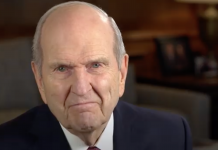
BRASILIA, Brazil, Dec. 14 (UPI) — Thousands of Brazilians took to the streets in the nation’s capital and elsewhere, protesting as lawmakers approved a long-term austerity plan on Tuesday aimed at solving massive budget deficits.
President Michel Temer’s proposed constitutional amendments to limit government spending during the next 20 years passed with a narrower margin than expected, but still relatively easy and with little debate from lawmakers in Brazil’s Senate.
The caps limit spending increases in the executive, judiciary and legislative branches of power to the rate of inflation of the previous year, freezing spending and almost guaranteeing government programs and services will start to lag or need to shrink.
Protestors raged across the country during the Senate session — in the capital, they clashed with police, stormed the offices of a television station and set fire to a bus — fearing the cuts will hurt already underfunded areas such as health and education, while affecting the poorest people in the country.
“Workers will have to pay for a crisis they didn’t create,” Weiller Pereira, who heads a metal workers’ union in São José dos Campos, told The Wall Street Journal. Another protestor, college student Luciana Azevedo, suggested “they should cut lawmakers’ salaries instead.”
Temer, who replaced former President Dilma Rousseff after she was impeached for violating budget laws, proposed the changes as a method of stemming the growing budget deficit in Brazil.
The deficit has continuously grown from 1.8 percent of gross domestic product in July 2011 to 8.3 percent in October of this year, and overall debt has increased from its most recent low of 51 percent of GDP in December 2012 to 70.3 percent in October.
The spending cap halts spending in all areas of the government aside from the universal healthcare and education systems, which will not be subject to the spending limits until 2018. About 150 million people and 45 million students could be affected by the cuts.






